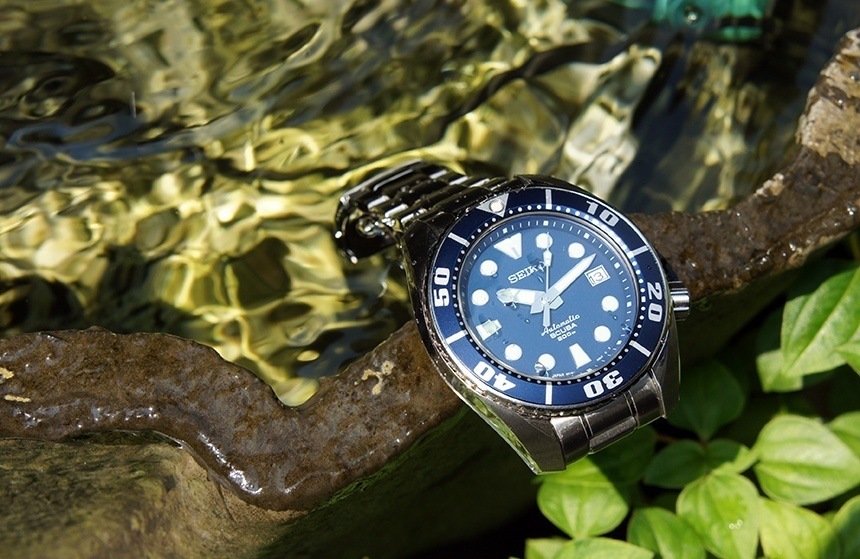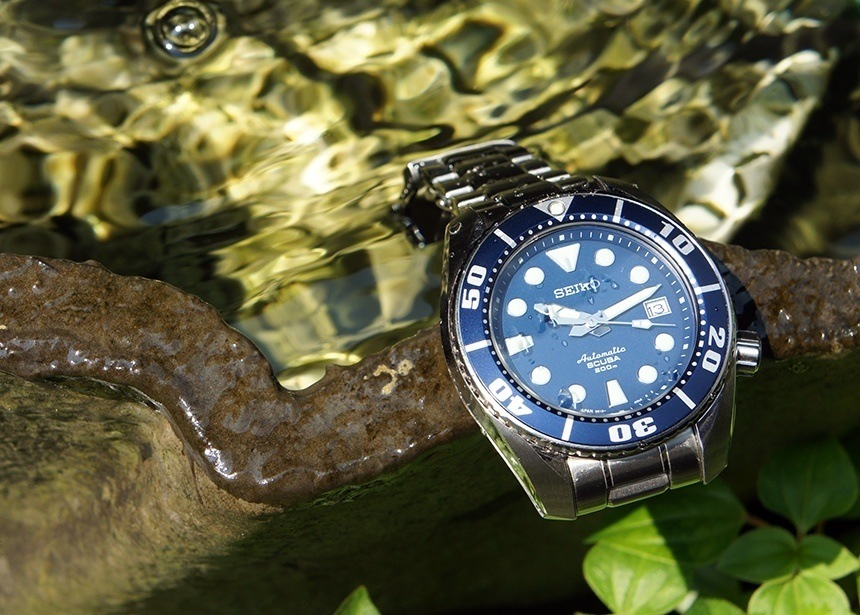
The Seiko Prospex Scuba SBDC003, as much as I enjoy wearing it on a daily basis, sheds light on some interesting issues that I would like to discuss before moving onto the details of this capable dive watch of exceptional value. You see, Japanese companies have a unique way of doing business that perplexes me: they like to keep the best things for themselves. Honda, Subaru, and Mitsubishi, for example, retain their most sought-after models only for Japanese customers. The last generation Civic Type-R was a good example, as the Japanese market had access to a wider selection of better equipped and more powerful and capable models, topped by the one with the codename FD2R. I digress, but this reveals a lot about how Japanese companies conduct their business.
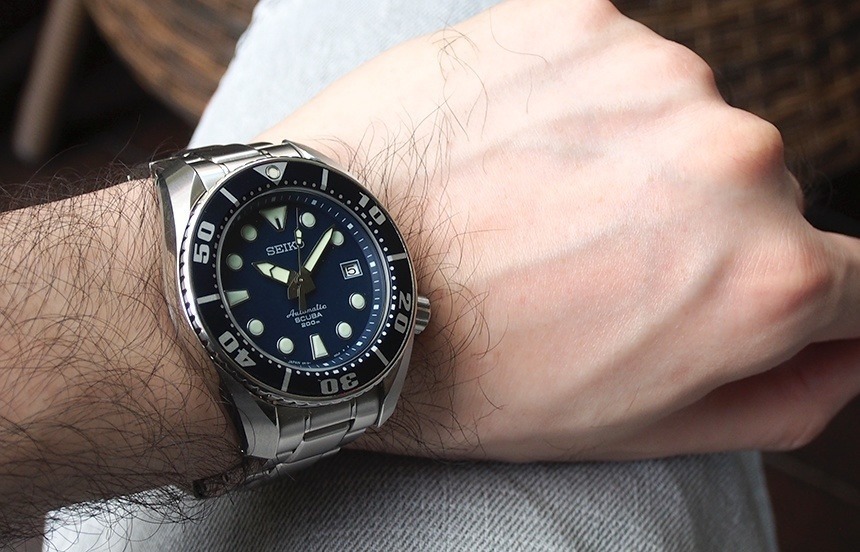
Likewise, for a long time, Seiko only sold their Prospex watches in Japan. Prospex is Seiko-speak for Professional Specification and it refers to watches built to very high standards for professional use. Beyond that, Prospex watches were also responsible for some of the innovations that we see in watches today. For example, in 1975, the Prospex 6159-7010 was the first dive watch to use a titanium case. In 1978, the Prospex 7549-7009 and 7549-7010 were the first dive watches to use a quartz movement. And in 1986, Seiko also introduced the first dive watch to have a ceramic protective shroud.
Fortunately, at Baselworld 2014, Seiko finally capitulated and announced that it will be making some of its Prospex watches available for purchase in the US market. One of the first watches that were offered was the Prospex Kinetic GMT SUN023 dive watch (review here). However, one watch continues to elude collectors outside of Japan, and that is the Prospex Scuba Dive Watch, or better known simply as the Sumo. The Seiko Prospex Sumo was released in 2007 and comes in three forms: the Seiko Prospex Scuba SBDC003, blue dial and metal bracelet; the SBDC001, black dial and metal bracelet; and the SBDC005, orange dial and rubber strap. The watch we have with us here is the SBDC003.
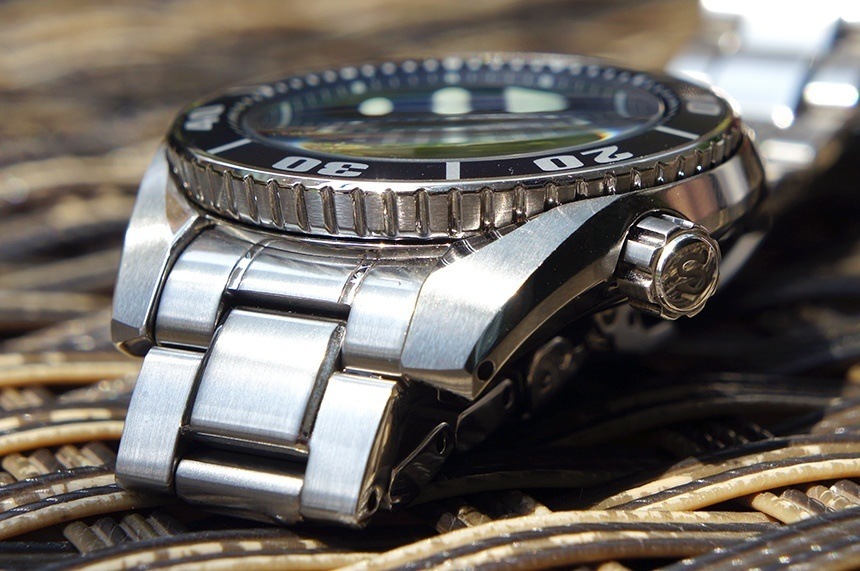
Seiko is renowned for its case work, and the Seiko Prospex Sumo is a great example of this. Some of you might be familiar with, or are maybe even owners of Seiko’s famous Monster series of dive watches – but the case work of the Seiko Prospex Sumo is easily a notch or two above these.
The Seiko Prospex Scuba SBDC003 Sumo, as its name might imply, is a large watch with a sizable 45mm case, and it is quite thick too, at around 13.5mm. Water resistance is 200m, and it meets the ISO 6425 standards for dive watches. It is not unwearable though, even if you have small wrists, as the lugs curve quite pronouncedly. I have 6.5-inch wrists, and though the watch certainly looks big on me, I never felt that it was uncomfortable. The Seiko Prospex Scuba SBDC003 Sumo also comes with lug holes, a boon for those who love swapping straps on their watches.
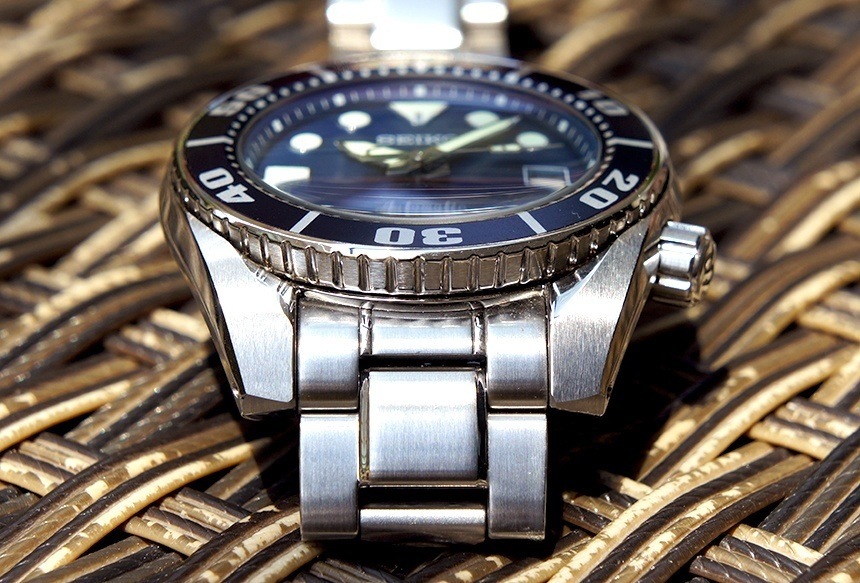
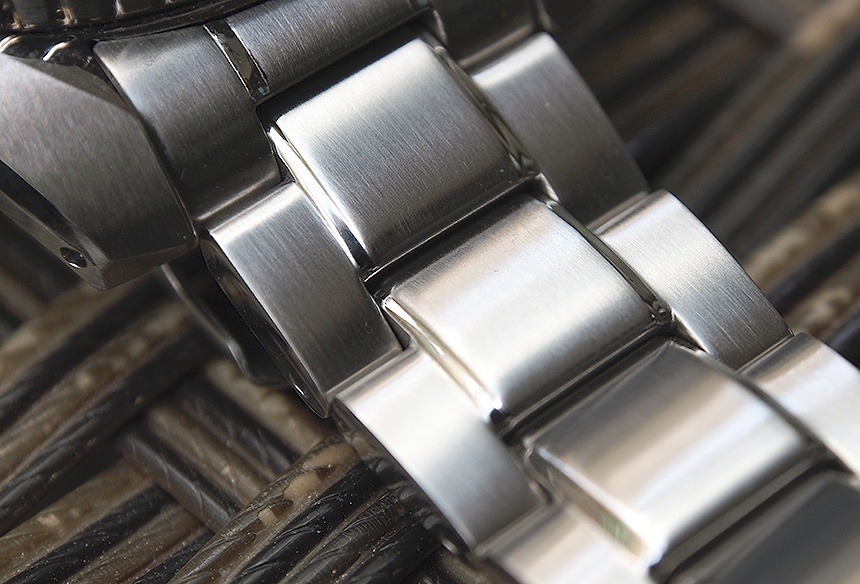
The Seiko Prospex Scuba SBDC003 comes with a stainless steel bracelet, and this bracelet has been widely criticized by many owners. Fortunately, the problem is not so much with its build quality. Construction is of a high grade, and it has a three-piece design with solid end-links. It is mostly brushed, but has polished accents on either side of the center link. The problem lies with its unusual size of just 20mm, which many owners feel does not match the large 45mm case at all. The fact that the bracelet tapers slightly near the clasps makes matters even worse for some owners.
Still, I don’t find this to be too much of a problem. Personally, I feel it still looks alright, though I do admit that it might be a problem if you like to wear your watches loose, as it might make the Sumo feel a tad top heavy. On the flip side, having a 20mm lug width also means that the Seiko Prospex Scuba SBDC003 Sumo will gladly accommodate any other straps that you might have accumulated in the past if you have owned other Seiko divers or watches with similar 20mm lug widths.
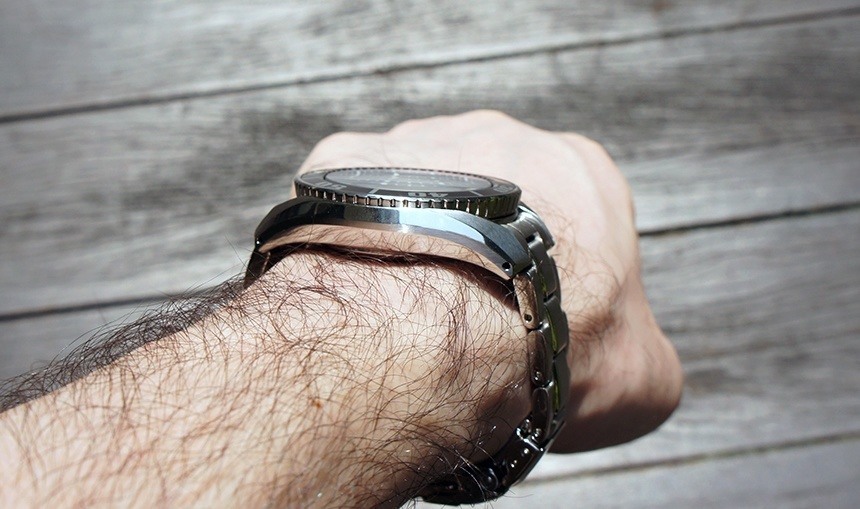
The other issue, which I think is more pressing, is the clasp, which is the same generic one that you get with other Seiko divers. There’s a diver’s extension, but it’s the same rudimentary one that you get on less expensive Seiko divers, and it looks and feels quite cheap. For a watch that has a higher positioning, the Seiko Prospex Sumo deserves a different clasp to differentiate it from your more common Monster and other divers.
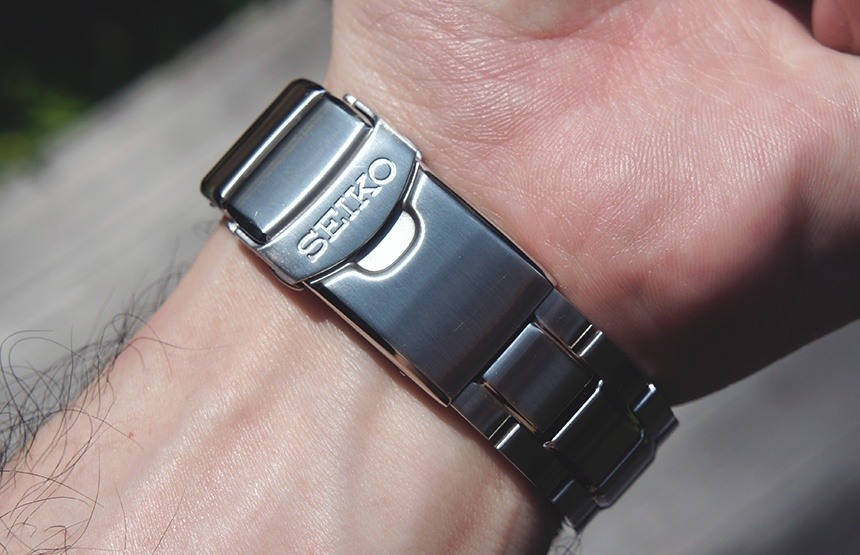
Size aside, the design of the case is really quite unique, with numerous neat details to appreciate. Seiko is famous also for its shrouded divers, and the Seiko Prospex Scuba SBDC003 Sumo has what I would call a semi-shroud-like design, where the sides of the case rises up to hug the bezel. The bezel is aluminum and has large printed markings on it. It clicks smoothly into 120 positions and offers zero play in the clockwise direction. The sides of the case are beveled with sharp, distinct lines and are evenly polished. Look closely, and you will see that the top sides of the lugs are brushed. You would be hard pressed to find this levels of finishing and case work in other similarly priced watches. The screw down case back is also brushed and features the recognizable tsunami emblem that is found on Seiko divers.
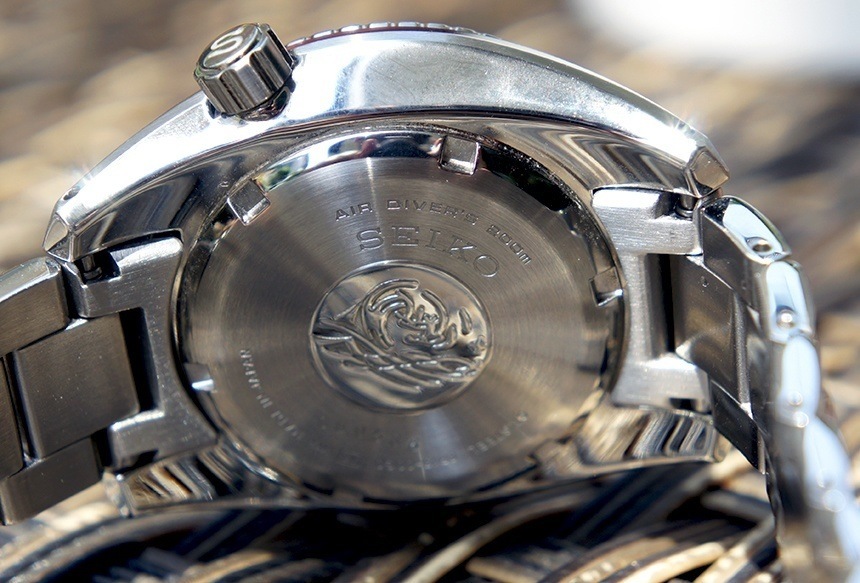
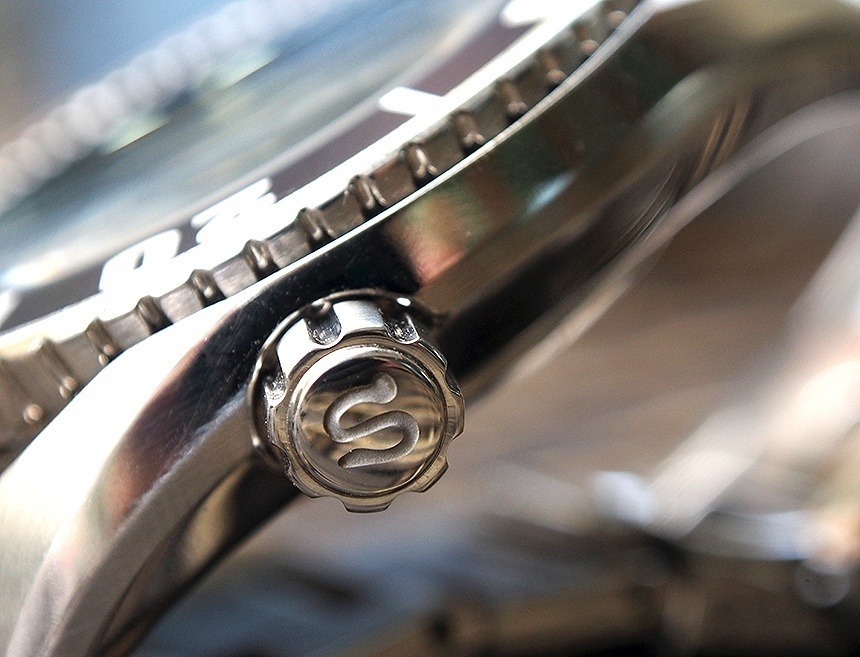
Like most Seiko divers, the screw down crown is positioned at four o’clock and it’s even signed with an “S” – presumably, for Seiko. The crown has deep grooves for easy operation, and it was easy to unscrew into its various positions. Inside, the Seiko Prospex Scuba SBDC003 Sumo is powered by Seiko’s more upscale 6R15 movement. It’s a much more convenient and usable movement compared to the older 7S26 because it can be hand wound and it hacks. The 6R15 movement is also a step up from the 4R36 movement found in the new Monster divers because of its longer, 50-hour power reserve – courtesy of a mainspring that’s made out of Seiko’s special Spron 510 alloy. The 6R15 runs at 21,600 beats per hour. In my case, I found that it was running about 4 seconds fast per day, which is actually well within COSC specifications.
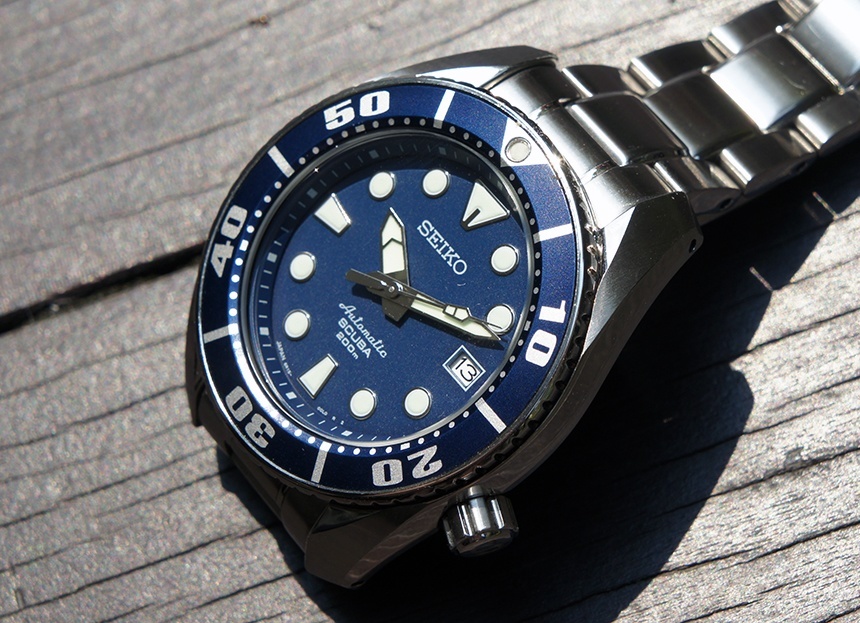
Legibility is not an issue with the Seiko Prospex Scuba SBDC003 Sumo. The hour markers and hands are all sizable and have been generously coated with LumiBrite. Once the watch has been given sufficient charge by a light source, it will glow brightly in the dark and the glow will last for hours easily. You did not expect anything less from a Seiko diver, right? Moving on, the hour markers and hands also have brightly polished edges that gleam brightly in sunlight with a pop-up effect that prevents the dial from looking too stale and flat, and reminds me of my Rolex GMT-Master II (review here).
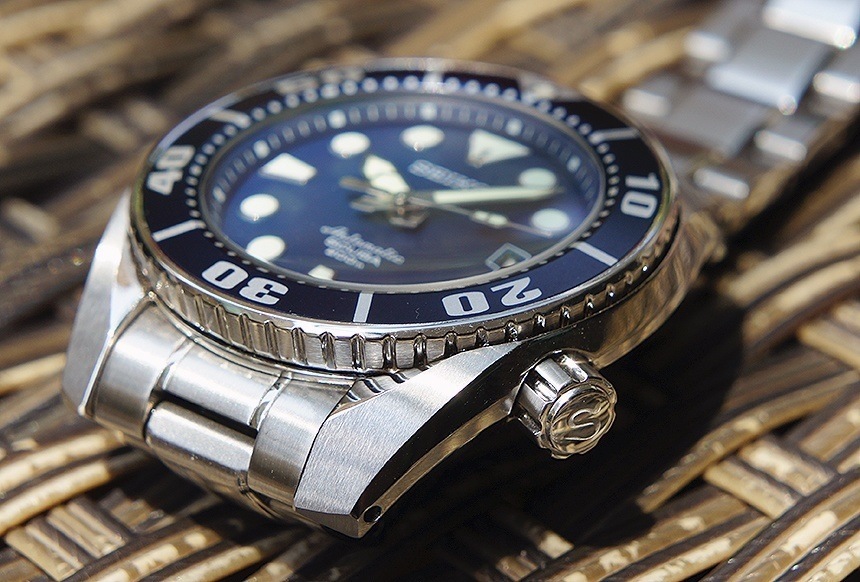
Like other Seiko divers, the Seiko Prospex Scuba SBDC003 Sumo is fitted with a slightly domed Hardlex crystal. Hardlex is a specially developed hardened mineral crystal material from Seiko. And though it is less scratch resistant than sapphire, Hardlex has one crucial advantage over sapphire: it cracks and does not shatter upon extreme impact. This makes Hardlex a more suitable choice since a shattered sapphire crystal during a dive almost definitely means the end of the watch.
All in all, I consider the Seiko Prospex Scuba SBDC003 Sumo to be one of the absolute best affordable Seiko dive watches. The Monster is great and deserves all the accolades that it has received, but for me, the Seiko Prospex Sumo is easily one or even two notches above it. Like the Monster, the Seiko Prospex Sumo is extremely durable, legible, and usable, but it surpasses the Monster with its slightly better movement, awesome case work, and fantastic dial. Price for the Seiko Prospex Scuba SBDC003 “Sumo” is ¥64,800 or around $540, but it’s easy to get it for much less if you shop around. seikowatches.com
Necessary Data:
>Brand: Seiko
>Model: SBDC003 “Sumo”
>Price: ¥64,800 (US$543)
>Size: 45mm
>Would reviewer personally wear it: Yes.
>Friend we’d recommend it to first: Anyone looking for a more unique and affordable Seiko diver.
>Best characteristic of watch: Fantastic case design and legibility.
>Worst characteristic of watch: Generic buckle. 20mm bracelet.

